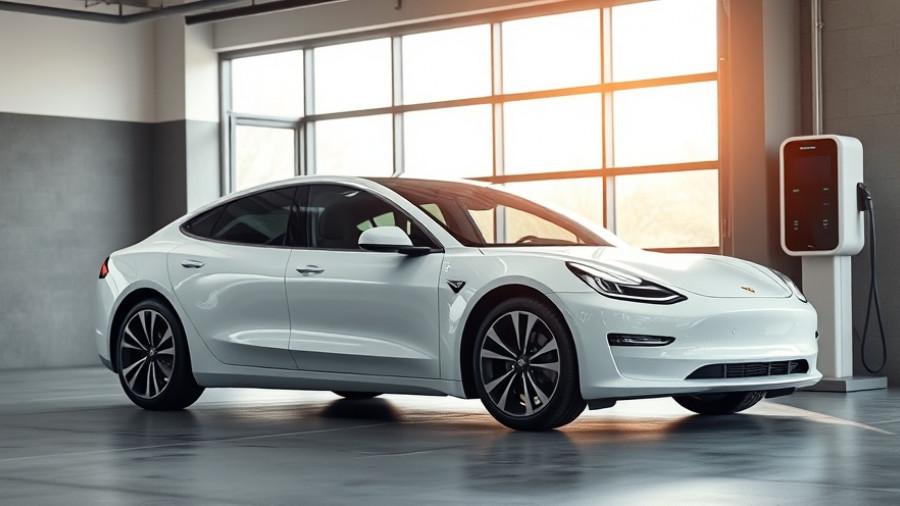
The Future of Mobility: Grab's Vision for Southeast Asia
In a strategic move that intertwines traditional ride-hailing with cutting-edge technology, Singapore-based Grab has announced its investment in WeRide, an autonomous vehicle specialist from Guangzhou, China. This partnership aims to revolutionize the transportation landscape in Southeast Asia with the introduction of robotaxis and autonomous shuttles. As cities globally adapt to the demands of urban mobility, the integration of such innovative technologies promises not only efficiency but also a shift toward sustainability—a topic of increasing relevance in today's green energy discourse.
Why This Partnership Matters
Grab’s collaboration with WeRide emphasizes a compelling intersection of regional expertise and technological prowess. WeRide’s plans to deploy thousands of robotaxis across Southeast Asia align closely with region-specific needs, which ensures that these autonomous solutions are tailored to local environments. Dr. Tony Han, founder and CEO of WeRide, points out that this strategic partnership will support their vision of gradual and compliance-focused implementation.
Get ready for a future where urban landscapes are enriched by cleaner and smarter transportation options—a phenomenon that is gaining momentum among both consumers and environmental advocates.
Understanding Level 4 Autonomous Driving
As we dive into the technological aspects of this partnership, it's important to clarify what Level 4 autonomous driving entails. Vehicles operating at this level can navigate specific domains with minimal human input. For instance, these vehicles will be able to complete designated routes independently, effectively recognizing their operational limits and responding appropriately, such as pulling over safely if the need arises. This technology paves the way for significant advancements in transportation efficiency, particularly within congested metropolitan areas.
The Green Tech Connection: Autonomous Vehicles and Sustainability
As someone invested in green technologies, the implications of robotaxis go beyond mere convenience. Integrating autonomous driving with sustainable transport systems minimizes reliance on fossil fuels, thereby reducing carbon emissions. With advancements in solar technologies and energy storage systems, electric robotaxis have the potential to accelerate the transition towards a greener future. Imagine electric fleets powered by renewable energy sources—this scenario is closer to reality than many might anticipate.
Challenges Ahead for Robotaxi Implementation
While enthusiasm abounds, it’s vital to acknowledge the hurdles that lie ahead. Establishing a regulatory framework for autonomous vehicles in Southeast Asia is complex and will require collaboration among various stakeholders, including government entities, technology providers, and the public. Additionally, infrastructural updates may be necessary for safe and efficient vehicle deployment. Anthony Tan, co-founder and CEO of Grab, highlights that extensive real-world testing across diverse environments is crucial for successful implementation. Accurate data collection during these tests will provide insights into how to adapt robotic technology to meet the region’s unique challenges.
Key Takeaways: What This Means for Homeowners and Businesses
For homeowners and businesses considering the adoption of green technologies, Grab's investment in autonomous vehicle technology represents a vital signal for the future of transportation. As infrastructure evolves and clean energy sources are integrated, those looking to invest in solar and electric solutions will find themselves at the forefront of this transition. With Grab and WeRide paving the way, anticipatory innovations in transportation will create opportunities for energy consumers to enhance their efficiency and sustainability.
Final Thoughts and Call to Action
The collaboration between Grab and WeRide illuminates the path towards an innovative, sustainable transportation framework in Southeast Asia. As experts predict greater integration of electric vehicle technology with renewable energy systems, now is the time for stakeholders in green solutions to advocate for smarter urban mobility solutions. Homeowners and businesses should stay informed and prepare to leverage these emerging technologies to improve their energy efficiency and operational capabilities.
If you’re interested in how autonomous vehicle technology can synergize with your green energy initiatives, explore the latest advancements in solar and electric transport devices that can enhance your sustainability journey.
 Add Row
Add Row  Add
Add 



Write A Comment